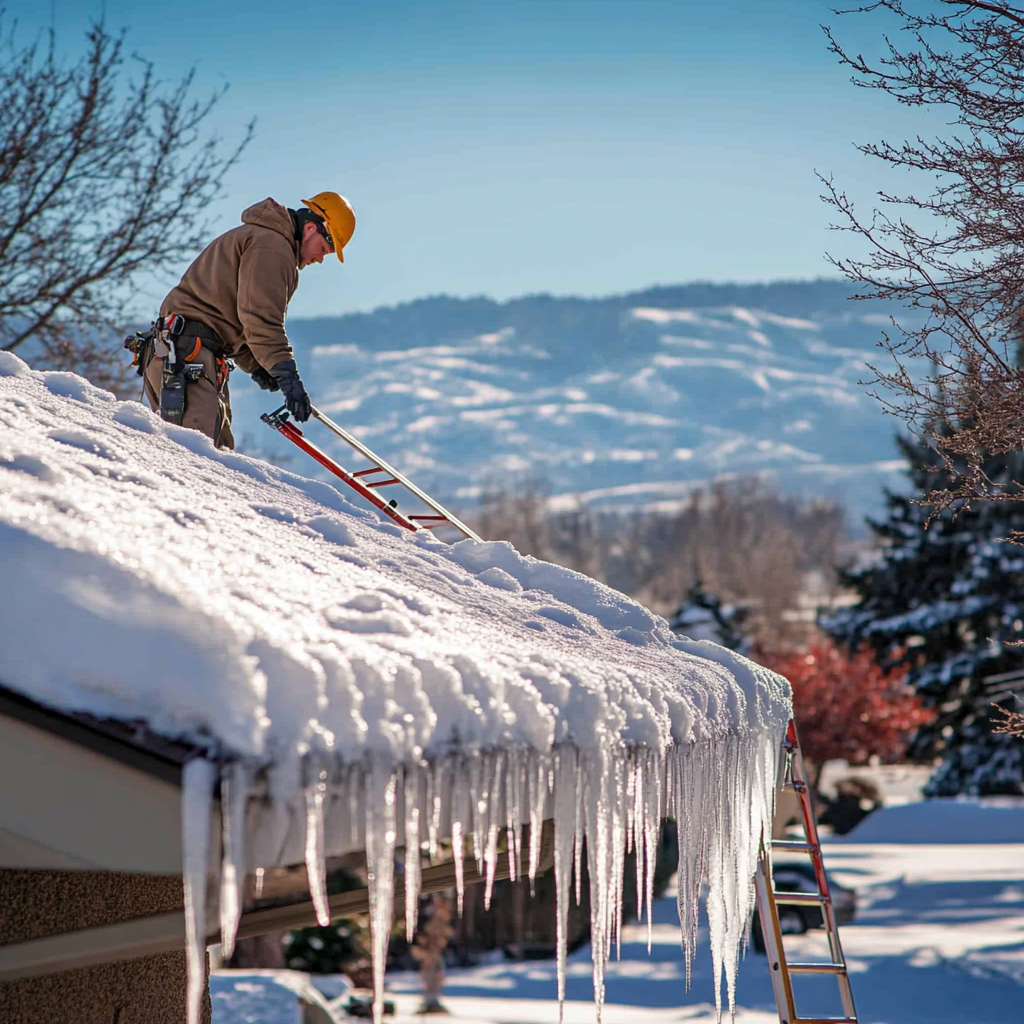The Role of Ice Dams in Roof Damage and How to Prevent Them
The Role of Ice Dams in Roof Damage and How to Prevent Them
Ice dams are one of the most significant threats to roofs during winter, especially in snowy regions like Wenatchee. These icy buildups can lead to leaks, water damage, and long-term roofing issues if not addressed promptly. This blog explores how ice dams form, the damage they can cause, and actionable steps to prevent them, helping Wenatchee homeowners protect their roofs all winter long.
What Are Ice Dams, and How Do They Form?
Ice dams are ridges of ice that form along the edges of your roof, preventing melting snow from draining properly. Instead, the trapped water backs up under your shingles, potentially leaking into your home.
How They Form
- Uneven Roof Temperatures:
- Warm air from inside your home escapes through the attic, heating the upper parts of the roof while the eaves remain cold.
- Snow melts on the warm areas of the roof, and the water flows down to the colder edges, where it refreezes, forming an ice dam.
- Thaw-Freezing Cycles:
- Wenatchee’s fluctuating winter temperatures exacerbate the problem. Daytime thaws followed by nighttime freezes contribute to the rapid buildup of ice dams.
Why Ice Dams Are Dangerous
Ice dams can cause severe damage to both your roof and home. Here’s how:
1. Water Damage to Roofing Materials
- Water trapped behind an ice dam can seep under shingles, causing them to loosen or warp.
- This moisture can penetrate your roof deck, leading to wood rot and structural weakening.
2. Interior Leaks and Mold Growth
- Once water breaches the roof deck, it can drip into your attic, walls, or ceilings, causing stains, peeling paint, and even mold growth.
- Mold can pose health risks and require expensive remediation.
3. Gutter Damage
- Ice dams often form over gutters, adding weight that can cause them to detach or sag.
- Damaged gutters hinder proper drainage, worsening the problem.
How to Prevent Ice Dams
Preventing ice dams requires a proactive approach, focusing on maintaining consistent roof temperatures and ensuring proper drainage.
1. Improve Attic Insulation
- Proper insulation minimizes heat escape from your home into the attic, keeping roof temperatures more consistent.
- Inspect your attic for any gaps or insufficient insulation and seal them promptly.
Tip: In Wenatchee, R-49 insulation is recommended for attics to withstand colder temperatures.
2. Ensure Proper Ventilation
- Ventilation allows cold air to circulate through your attic, reducing the temperature differential across your roof.
- Ridge vents, soffit vents, and gable vents are all effective at promoting airflow.
3. Use Ice and Water Shields
- Ice and water shields provide an extra layer of protection beneath your roofing materials, especially along the eaves.
- They prevent water from seeping into the roof deck if ice dams form.
4. Regularly Remove Snow from Your Roof
- Clear snow buildup to prevent it from melting and refreezing into ice dams.
- Use a roof rake to safely remove snow while standing on the ground. For heavy accumulations, hire a professional to avoid damaging your roof or risking injury.
Professional Ice Dam Prevention and Removal Services in Wenatchee
While homeowners can take preventative steps, severe ice dams often require professional attention. Roofing experts in Wenatchee can:
- Safely remove ice dams using steam equipment or other methods that won’t damage shingles.
- Assess your roof for vulnerabilities and recommend improvements like insulation upgrades or gutter repairs.
- Provide long-term solutions to minimize future ice dam formation.
Frequently Asked Questions About Ice Dams
1. How Much Snow Is Too Much for a Roof?
Wenatchee roofs can typically handle 20 pounds per square foot of snow. Wet snow and ice are much heavier, so it’s best to clear your roof if snow exceeds 6 inches.
2. Are Ice Dams Covered by Home Insurance?
Many homeowners’ insurance policies cover water damage from ice dams, but they may not cover the roof repair itself. Check your policy for specific details.
3. Can Heat Cables Prevent Ice Dams?
Heat cables can melt ice and snow in targeted areas, but they’re not a substitute for proper insulation and ventilation. They work best as a supplementary solution.
Stay Ice-Free This Winter
Ice dams are a serious winter roofing issue, but they’re entirely preventable with the right strategies. By improving insulation, ensuring ventilation, and removing snow promptly, Wenatchee homeowners can protect their roofs and homes from costly damage. For persistent ice dam problems, professional services are the safest and most effective solution.
You might also like
Common Roofing Questions


Get Instant Quote
